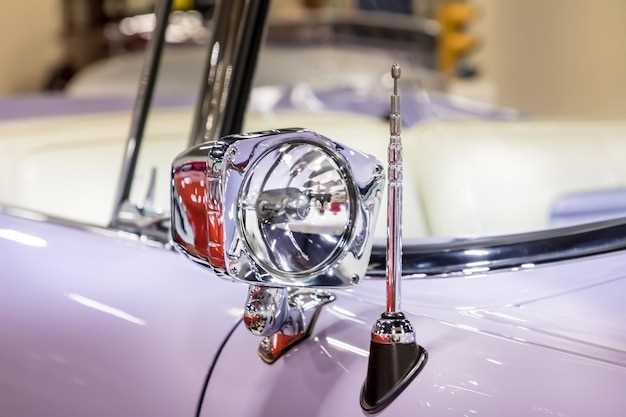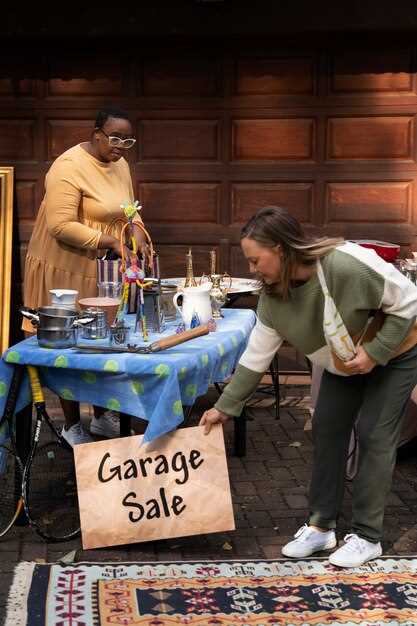
Participating in a vintage car show can be an exhilarating experience for both enthusiasts and collectors. Proper preparation is crucial to ensure that your classic car stands out among the crowd. In this article, we will explore essential prep tips that will help you showcase your vehicle in the best possible light.
First and foremost, thorough cleaning and detailing of your classic car is a vital step in the prep process. A sparkling exterior and a meticulously cleaned interior not only enhance the visual appeal but also demonstrate your commitment to maintaining the vintage vehicle. Consider using high-quality cleaning products specifically designed for classic cars to avoid any damage to the paint or chrome.
Additionally, it’s important to review the exhibition guidelines provided by the event organizers. Different shows may have varying requirements regarding vehicle registration, display setup, and even safety regulations. Taking the time to familiarize yourself with these aspects will help streamline your prep efforts and ensure a smooth experience on show day.
Finally, networking with other car enthusiasts can provide invaluable insights and tips for your prep efforts. Engaging with fellow participants can help you learn from their experiences, share best practices, and discover what makes a truly successful vintage show presentation.
Cleaning and Detailing Your Vintage Car

Preparing your vintage car for a classic car exhibition starts with an impeccable clean and detail. A thorough washing not only enhances the appearance but also protects the finish and maintains the vehicle’s value. Begin by rinsing the exterior with water to remove loose dirt and grime, ensuring that any abrasive particles are eliminated before applying soap.
Utilize a pH-balanced car soap to wash your car, employing a microfiber mitt to avoid scratches. Pay special attention to the wheel wells and tires, as these areas can accumulate significant dirt. Use a dedicated wheel cleaner and a soft brush to ensure that brake dust and road grime are thoroughly removed.
After washing, carefully dry the exterior with a soft, lint-free towel to prevent water spots from forming. Once dry, it’s time to inspect the paintwork for imperfections such as swirl marks or scratches. Consider using a clay bar to remove embedded contaminants that washing alone cannot address.
Next, apply a high-quality wax or sealant to protect the finish. This will not only enhance the shine but also provide a protective barrier against UV rays and environmental pollutants. For vintage cars, consider using a natural wax that complements the classic look.
Interior detailing is equally important. Start by vacuuming the seats, carpets, and mats to remove dirt and dust. Use a soft brush attachment to clean delicate surfaces without causing damage. Clean the dashboard, door panels, and trim with a suitable interior cleaner that matches the materials used in your vintage car.
If your car has leather seats, use a specialized leather cleaner followed by a conditioner to maintain suppleness and prevent cracking. For fabric seats, ensure that any spots or stains are treated with appropriate fabric cleaning products.
Finish the detailing process by cleaning windows inside and out with a streak-free glass cleaner. Don’t forget to ensure that all chrome and metal trim shine through; a metal polish can help bring back the luster of any dull surfaces.
With careful cleaning and detailing, your vintage car will not only look its best at the exhibition but will also reflect the love and attention you have given it over the years. This prep work is crucial for making an impactful impression on judges and fellow enthusiasts alike.
Preparing Documentation and History for Your Exhibit

Prep is essential when showcasing classic cars at an exhibition. One of the critical components of your exhibit is the documentation and history surrounding each vehicle. Properly prepared documents enhance the authenticity of your display and engage visitors with compelling narratives.
Start by compiling the ownership history of each car. Include previous owners, milestones, and any significant restorations. This backstory increases the value of your cars and offers an emotional connection for the audience. If available, add photographs from different periods to illustrate the car’s journey through time.
Next, gather technical specifications for each vehicle. Include details such as engine size, horsepower, unique features, and production year. Present this information in an easy-to-read format, as technical enthusiasts attending the show will appreciate precise data points. Well-organized specifications also add credibility to your exhibit.
Don’t overlook any awards or recognitions your cars have received. Document any competitions entered, placing them within a broader context of the car’s impact in automotive history. If the car has appeared in publications or media, mention these references as they contribute to its prestige.
Create informative placards to display alongside each car. These placards should summarize the vehicle’s history, specifications, and any unique anecdotes. Keep the language engaging yet concise, ensuring visitors grasp the essence of the car quickly while they enjoy the show.
Lastly, consider preparing a digital presentation or brochure that complements your physical display. This additional material can provide deeper insights or serve as a takeaway for interested visitors. Documenting the heritage of your classic cars will enrich the exhibition experience and invite enthusiastic discussions around the legacy of these timeless machines.
Logistics: Transporting and Setting Up Your Display
Proper logistics is crucial for ensuring your classic cars shine at the show. Start by planning the transportation of your vehicles carefully. Choose a reliable transport service that specializes in classic cars to minimize risks during transit. Make sure to schedule the pickup and drop-off dates well in advance to avoid last-minute complications.
Before transport, ensure that each car is thoroughly inspected and cleaned. Remove any loose items from the interiors and secure any parts that might shift during transit. Document the condition of each vehicle with photographs, as this can be valuable in case of any damage during transport.
Upon arrival at the exhibition venue, prioritize setting up your display efficiently. Know the layout of the venue and where your allocated space is located. Arrive early to give yourself ample time for the setup process. Unload the cars with care and position them according to your design plan. Consider the flow of foot traffic when arranging the vehicles to maximize visibility and accessibility.
In addition to displaying the cars, think about incorporating informational signage and promotional materials that highlight the features and history of each vehicle. This enhances overall engagement and draws attention to your display, making the classic cars the stars of the show.
Lastly, ensure that any necessary equipment for showcasing your cars, such as display stands or lighting, is ready and functional. A well-organized and visually appealing display can significantly enhance the overall experience for attendees and ultimately contribute to the success of your exhibition.


